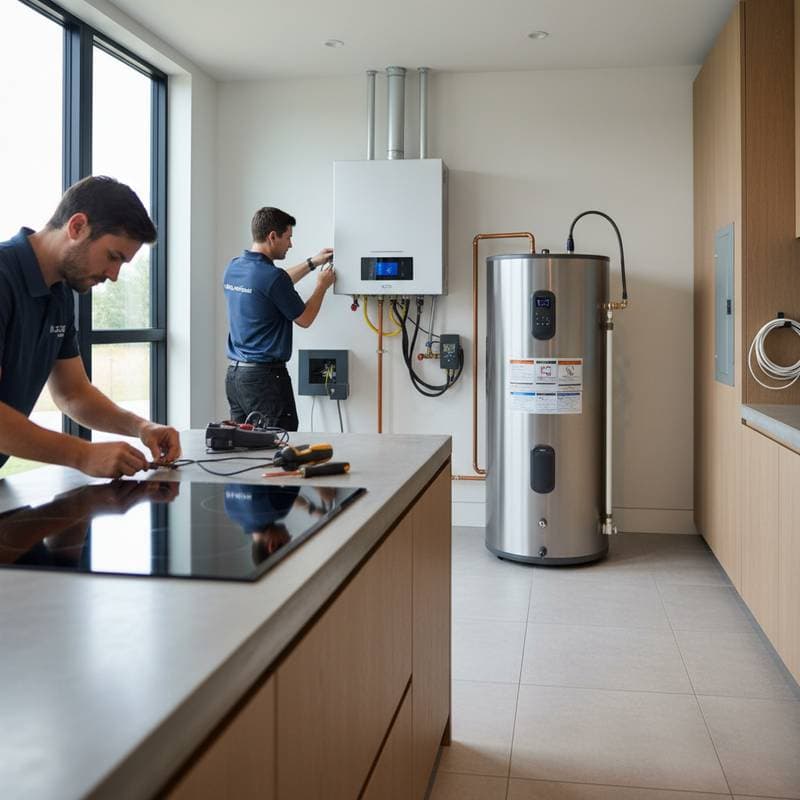Energy Floors: Power Your Home with Every Step
Imagine walking through your home and generating electricity with each step. Energy-harvesting floors make this a reality by converting foot traffic into usable power, offering a unique way to reduce reliance on the grid. This innovative technology is not just a futuristic concept; it is available now, providing a sustainable boost for eco-conscious homeowners. Let us explore how these floors work, their benefits, and practical steps to integrate them into your living space.
How Energy-Harvesting Floors Generate Power
Energy-harvesting floors capture kinetic energy from footsteps using small generators embedded within or beneath the surface. Depending on the system, this energy is either stored in a battery for later use or directly powers low-demand devices like LED lights. The process is seamless, requiring no extra effort beyond your normal movement. Busy households with constant activity stand to gain the most from this technology.
Core Technologies Behind the Systems
- Piezoelectric Materials: These generate electricity when compressed by footsteps, ideal for smaller-scale installations.
- Electromagnetic Generators: Using magnets and coils, these systems are durable and suited for high-traffic areas.
- Triboelectric Nanogenerators: Though still emerging for home use, they create energy through surface friction and show promise for future applications.
Why Consider Energy Floors for Your Home
Rising utility costs and environmental concerns drive many to seek alternative energy sources. Energy-harvesting floors provide a supplementary power solution, especially in high-traffic zones like hallways or kitchens. While they will not fully replace traditional energy systems, they reduce grid dependency and lower your carbon footprint. Over time, the savings on bills and the satisfaction of sustainable living can outweigh the initial investment.
Key Benefits of Energy-Harvesting Floors
- Grid Independence: Every watt generated reduces your need for external power, enhancing energy resilience.
- Sustainability Impact: Micro-generation from footsteps cuts emissions tied to household energy use.
- Educational Value: These floors often inspire curiosity about renewable energy, especially among younger family members.
- Scalable Potential: In larger settings like schools or gyms, thousands of steps can produce significant power outputs.
As sustainable design researcher Dr. Elena Ruiz notes, "Energy-harvesting floors connect daily actions to renewable energy in a tangible way. Seeing a light powered by your own steps creates an awareness that distant solar panels often cannot match."
Practical Steps to Maximize Efficiency
To get the most from energy-harvesting floors, strategic planning is essential. Focus on placement and integration with other systems for optimal results. Here are actionable tips from green building experts:
- Target High-Traffic Areas: Install in entryways or kitchens where movement is frequent, avoiding low-use spaces like guest rooms.
- Incorporate Battery Storage: Pair the system with a battery to store energy, preventing waste during low-demand periods.
- Connect to Smart Home Features: Use harvested power for LED lighting or charging stations to ensure efficient allocation.
- Combine with Other Renewables: Enhance impact by integrating with solar panels or small wind turbines for a balanced energy mix.
- Hire Professionals: Proper installation demands expertise in electrical systems and flooring durability, so always consult a licensed contractor.
What to Know Before Installation
Before committing, evaluate the practical aspects of energy-harvesting floors. Costs typically range from $8,000 to $15,000 for a medium-sized room, roughly two to three times the price of premium conventional flooring. Maintenance is minimal, with components sealed against dust and moisture, but installation may take one to two weeks due to electrical integration. Safety is paramount, so ensure all wiring complies with local codes and involves a certified electrician.
Energy output varies by household activity. A family of four might generate enough to power several lights or charge devices daily, while larger installations in public spaces can yield more substantial results.
Pitfalls to Avoid When Adopting This Technology
Homeowners often overestimate the energy these floors can produce. They work best as a supplement, not a primary source, so temper expectations accordingly. Skipping battery storage is another common mistake, as excess energy goes unused without it. Lastly, avoid DIY attempts; improper setup risks inefficiency and safety hazards.
Taking the First Step Toward Installation
If sustainability and innovation resonate with your household goals, energy-harvesting floors offer a compelling option. Start small by testing the technology in one high-traffic area to assess its impact firsthand. Consult a green building professional to analyze your home’s layout and energy needs. With the right approach, this flooring can become a meaningful part of a broader eco-friendly lifestyle, complementing solar setups and efficient appliances for lasting benefits.








